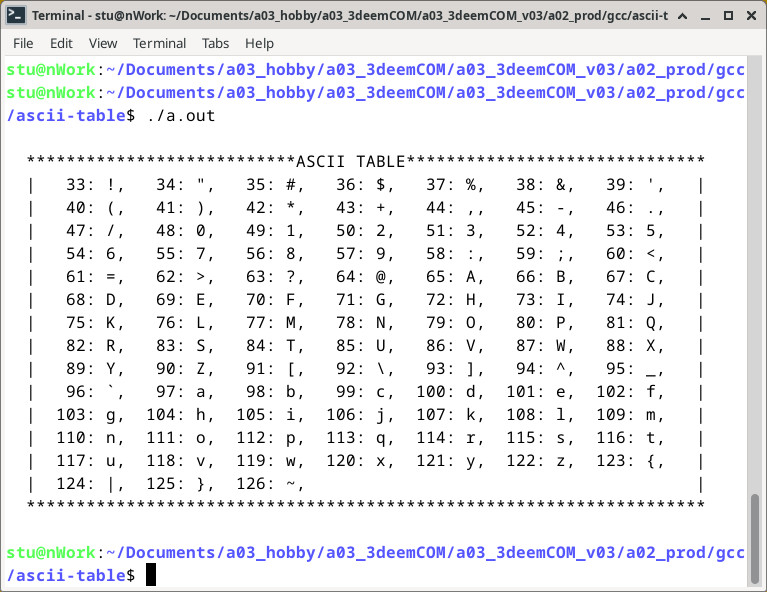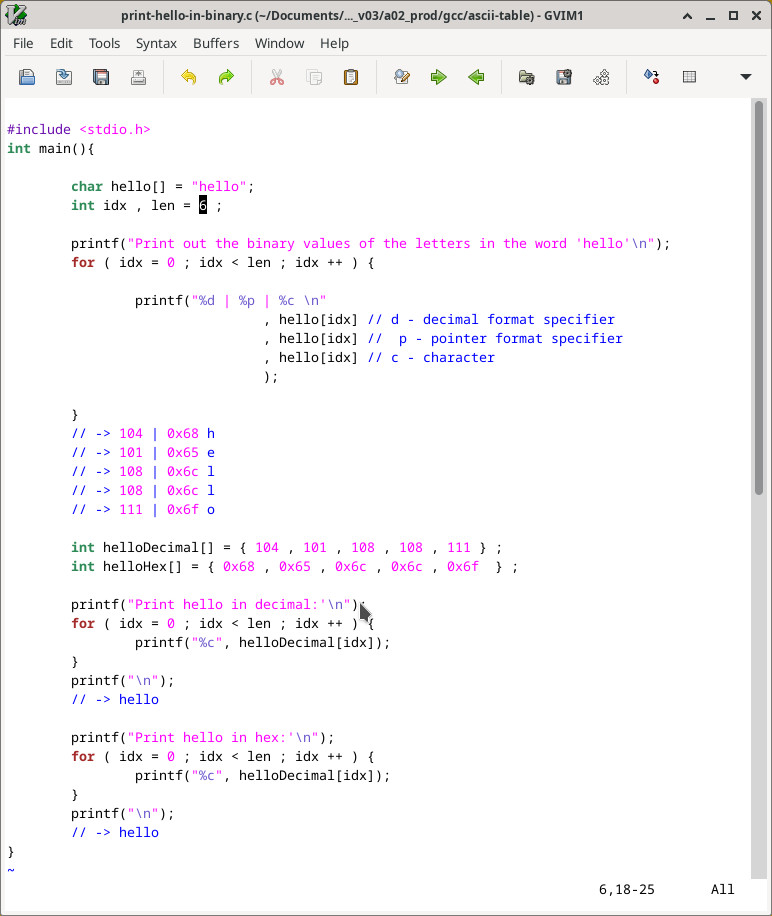A print out of the ascii table
Binary to ASCII Table Characters
Description
We know that the computer runs on binary bits of 1s and 0s. The ASCII table is the look up map for storing characters including the alphabet. Propelled by curiosty we often look for this table. Here we will print it out in the terminal.
While we go about printing out the ASCII table we can quench our thirst for the knowledge of the difference between ints and characters. They are one and the same. We will print out characters using ints and the character of equivalent of ints.
With the ASCII table in hand, we can talk in binary. As a playful exercise a popular first communication in binary is to say "hello". So we will say hello in binary(hex).
Audience
You are new to computer programming and interested in the low level details of how computer software works.
Usage
Compile and execute.
$gcc print-ascii-table-33-126.c -out print-out-ascii-table.out
$./print-out-ascii-table.out
DEMO - ASCII table
We won't print out the whole table just the characters. The first couple dozen or so table entries are non printable such as a space, a tab, beep codes and similar. The printable characters start at entry 33 with the exclamation mark, the dollar sign, single quote, ...
$./print-out-ascii-table.out
source file link: ./print-ascii-table-33-126.c
DEMO - using ints as characters
Here is a print out of the each characters in the word hello using p-pointer, d-decimal, and c-character format specifies.
source file link: ./print-hello-in-binary.c
Final Notes
The ASCII table only support English or Latin Characters. It is limited to a single byte and so 128 character. We now have the UTF-8 character set which is much larger so it can support multiple languages. UTF-8 is backwards compatible with the ASCII table. The same entry indices map to the same characters.

